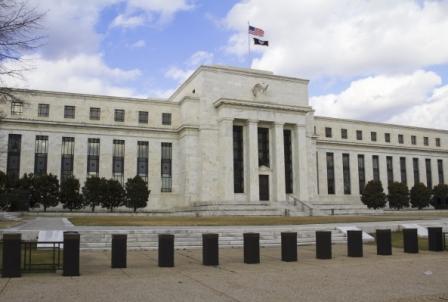Federal Reserve to finish tapering its Quantitative Easing Programme
By Smart Currency April 16th, 2014

US Outlook – April 2014
Quantitative Easing
Newly-crowned US Federal Reserve Chair Janet Yellen presided over a wintry kingdom, with adverse weather causing setbacks in economic activity. The US economy appeared to rally the best it could, and the Federal Open Market Committee (FOMC) – headed by Yellen – responded by cutting the amount it injects monthly into the economy by $10 billion for the third time, leaving the central bank’s monthly bond purchases at $55 billion.
Despite the inclement tribulations, analysts expect the Federal Reserve to finish tapering its quantitative easing programme sometime this year. The question for the US economy is how US recovery will stand up to events elsewhere around the world. The recent tide of geopolitical events in Ukraine that strengthened the dollar on account of its safe haven status has receded, leaving the dollar with fewer defences with which to battle a sterling strengthened by UK economic growth. It will be interesting to note whether the central bank will succumb to pressure to raise interest rates when tapering ends, even if the economy is not quite at the point of self-sufficiency.
Eastern Threat
China widened the yuan’s trading band against the dollar in March, up from 1% to 2% on either side, in order to encourage two-way market fluctuations. This had the effect of a weakened yuan against the dollar; however, once the Chinese currency has got over its teething problems, it could pose a legitimate threat to the strength of the dollar. Given the volume of international trade that the US is party to, both with China and elsewhere, we will be keeping a close eye on how the dollar reacts to developments away from its homeland.
US – Forecast
The UK and the US are seeing steady economic recovery and progress. The US is reducing its programme of quantitative easing, which should have stopped by the end of this year. The guessing game will then start as to when US interest rates will start to increase. The UK now has its eighteen indicators to monitor and help it decide when to raise its interest rates. We wonder how keen the US will be to increase rates given the huge build-up in government debt since the start of the crisis. Any increase by either the US or UK governments will be very carefully considered and not a foregone conclusion. As such, we will not see an increase in interest rates in the next twelve months. As we see interest rate rises as the key catalyst for sterling-US dollar movement, we expect the exchange rate to be relatively steady for the time being. As ever, this could change very quickly if other factors come to the fore.
For expert guidance and help on how these forecasts might impact your international money transfers for the year ahead, call 020 7898 0500 or email us at [email protected]

 020 7898 0500
020 7898 0500